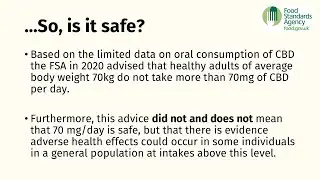The science of CBD: Exploring safe limits
Cannabis has been reportedly used for thousands of years for a wide range of ailments. The cannabis plant produces more than 100 cannabinoids, with the main one, delta-9-tetrahydrocannabinol, known as THC, producing psychoactive effects. However, there is increasing interest in another of the cannabinoids, cannabidiol (CBD), which shares the same molecular formula as THC but has different chemical properties.
With CBD now being available in a wide range of products, it is important to understand its safety as a novel food – foods which have not had a significant history of human consumption. A recent and pivotal report by the Food Standards Agency (FSA) in the UK has established a new safe limit for CBD consumption of 10 mg per day. The report also states there is evidence for intake above this level, and over a period of time, to have adverse impacts on the liver and thyroid.
In this hour-long webinar we delve into the evolving landscape of CBD integration in food products. During the event, our speakers clarify the reasoning behind the new FSA guidelines, giving you insights into the endocannabinoid system to understand how CBD interacts with the body. Ruth and Stephen also explore the current research on its potential therapeutic applications.
Watch the recording and learn from experts working at the heart of CBD science and policy about how they’re assessing the ever-evolving data to identify how CBD can be used safely. Don’t miss this opportunity to gain a clear and evidence-based understanding of dietary CBD.



















